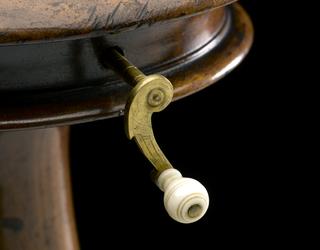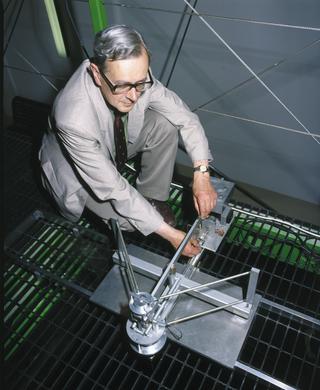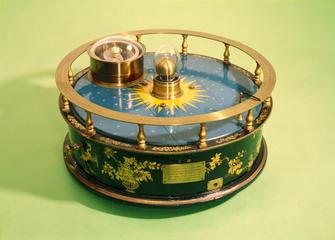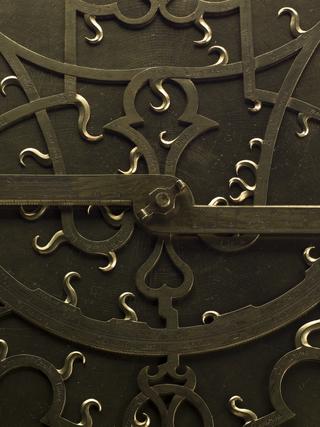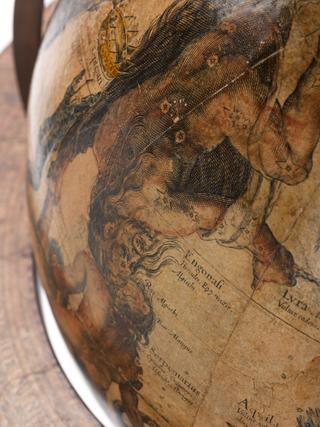Arabic wooden horary quadrant (16 cm radius), with painted scales and cloth case by Mustafa Ayyub and dated AH 1143 (1730-1).
Dated 1730-1, this Islamic horary quadrant was made by Mustafa Ayyubi in the Middle East. Made of wood the quadrant has hand drawn painted scales and inscriptions. The horary quadrant was used for finding local time by sighting either the Sun or a bright star at night. Held vertically, a measurement could be taken from the position on the scale of a moveable bead on the tread of the plumb bob of the instrument. The horary quadrant was derived from the astrolabe and first appeared during the Medieval Period. Like its predecessor it includes a two-dimensional depiction of a celestial sphere that is reduced to a quarter.
